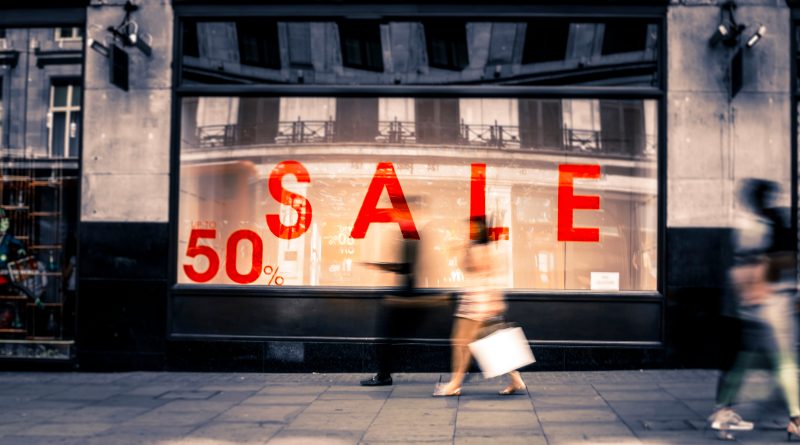UK Retail Sector Sees Low Inflation
UK retail inflation has reached a significant low, holding steady at 0.2% as of July 2024, a level not seen since October 2021. This trend is particularly driven by the persistent deflation in clothing and footwear prices, which continue to fall despite broader economic challenges. The British Retail Consortium (BRC) and NielsenIQ reported that non-food items experienced a deflation rate of -0.9%, showing a slight improvement from -1% in the previous month. Understanding these trends is crucial for both consumers and businesses as they navigate the evolving retail landscape.
Continuous Deflation in Clothing and Footwear Prices
Several factors contribute to the current low inflation rates in the UK retail sector. One of the main drivers is the continuous deflation in clothing and footwear prices. This sector has seen sustained price drops, influenced by a shift in consumer behavior towards more economical options during the cost-of-living crisis. Consumers are increasingly opting for own-brand products over more expensive alternatives. A recent survey indicated that over a third of consumers are now purchasing more own-brand products than they did a year ago. This trend is expected to persist as consumers prioritize value for money amid economic uncertainty. Even high earners are joining this trend, with 54% of those earning over £60,000 annually purchasing more own-brand products.
The overall economic conditions, including higher prices and interest rates, have also played a significant role. The sentiment among consumers reflects a cautious approach to spending, especially on non-essential items. A survey by RSM UK revealed that 92% of consumers believe higher prices will impact their non-essential spending in the next 12 months. This cautious spending behavior has contributed to the deflationary pressures in the retail sector.
Broad Economic Implications of Low Retail Inflation
The sustained low retail inflation has broad economic implications, affecting both consumer spending and business strategies. Consumers face higher prices and interest rates, which have led to reduced spending on non-essential items. This trend is likely to continue into the first half of 2024. However, forecasts suggest that inflation will align with the Bank of England’s target rate of 2% in the second half of the year, accompanied by potential interest rate cuts and wage growth. These factors are expected to boost consumer confidence and spending, providing a more optimistic outlook for the retail sector.
Additionally, real wages are expected to grow throughout the year, and tax cuts are likely to be announced in the Spring Budget of March 2024. These factors should help ease the financial pressures on consumers, further enhancing their spending power and boosting retail sales. The combination of stable inflation, lower interest rates, and increased disposable income presents a more favorable economic environment for the retail sector.
Different sectors within the retail industry are impacted variably by current inflation trends. The clothing and footwear sector, in particular, continues to experience significant price deflation, which has been a major factor in keeping overall retail inflation low. Clothing and footwear prices have been on a downward trend, contributing to the overall deflation in non-food items. This deflationary trend is influenced by several factors, including increased competition among retailers and the growing popularity of own-brand products. Many retailers have expanded their own-brand offerings to meet the demand for more affordable options, further driving down prices in this sector.
Meanwhile, food inflation, although still present, has shown signs of slowing down. Fresh food inflation, for example, dropped from 1.5% in June to 1.4% in July, staying below the three-month average rate. This trend suggests that while food prices remain relatively high, the rate of increase is slowing, providing some relief to consumers.
The shift towards own-brand products is not limited to lower-income households. Even higher-income households are increasingly opting for these products, driven by the perception of better value for money. This trend is particularly evident in categories like clothing, fashion accessories, and health and beauty products, where own-brand lines have seen significant growth.
As financial pressures ease, there is also a resurgence in consumer interest in sustainable products. Many consumers are now willing to pay more for products that align with their environmental values. Retailers that offer sustainable options, such as products with environmentally friendly packaging or those produced sustainably, are likely to attract more customers. This trend underscores the importance of sustainability in shaping consumer preferences and spending habits in the future.
The UK retail sector is experiencing a period of low inflation, driven by the persistent deflation in clothing and footwear prices. This trend has significant implications for both consumers and businesses, shaping spending patterns and economic strategies. As inflation stabilizes and economic conditions improve, the retail sector is poised for a potential recovery, with opportunities for growth in own-brand products and sustainable offerings. Retailers must adapt to these changing conditions to stay ahead in the evolving market landscape.
Sources:
